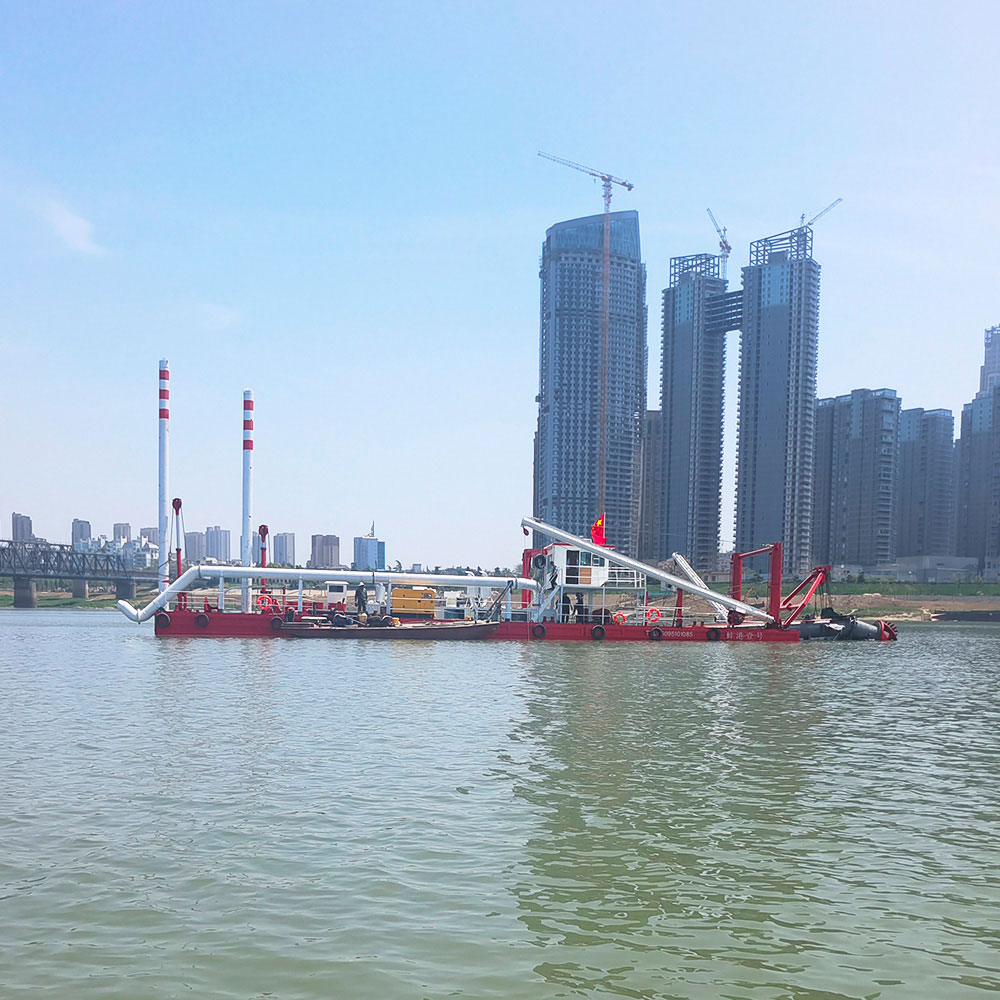A Complete Guide to Choosing a Cutter Suction Dredger
2025-07-25
A cutter suction dredger is a "heavy weapon" in dredging projects. If you choose the right one, you can get twice the result with half the effort. If you choose the wrong one, it will cost you money and delay things. Today, let's talk about how to choose the most suitable cutter suction dredger, and make sure you understand and use it.
First look at the project requirements: the most important thing is to prescribe the right medicine for the right disease
Choosing a dredger is like seeing a doctor, you have to "feel the pulse" first:
Soil type: soft mud, gravel or hard rock? Different soils require cutters of different powers
Operating water depth: shallow water or deep water? This directly affects the hull design and suction and discharge system
Processing volume requirements: How many cubic meters need to be cleaned every day? This determines the size and power configuration of the ship
Environmental protection requirements: Is closed operation required? This is related to the discharge system and anti-pollution design
Remember, there is no universal dredger, only the most suitable configuration
Keep an eye on key components: Don't be careless in these places
The core components of the dredger directly determine the work efficiency:
The dredger system: Just like the "teeth" of the ship, the power and type must match the soil
Suction and discharge system: Pipeline diameter and pump power affect the delivery efficiency
Positioning system: GPS positioning or traditional anchoring? This is related to the accuracy of the operation
Control system: Manual operation or fully automatic? The degree of modernization determines the labor cost
Special reminder: For second-hand equipment, focus on checking the wear of these components!
There are tricks to brand selection: cost-effectiveness is king
Common brands on the market have their own characteristics:
International big brands (such as IHC of the Netherlands and IHI of Japan): mature technology but expensive
Domestic newcomers (such as CCCC Tianhe and Zhenhua Heavy Industries): high cost-effectiveness and good after-sales service
Niche brands: attractive prices but beware of quality traps
Suggestions: Choose imports if you have sufficient budget, choose domestic brands if you pursue cost-effectiveness, and be especially careful of those "copycat" brands you have never heard of
Field inspections cannot be saved: seeing is believing
No matter how good the parameters are, they are not as good as seeing them on site:
On-site test machine: see the actual operation performance
Check the maintenance records: the maintenance status of the equipment is clear at a glance
Talk to the operators: they know the true performance of the equipment best
Compare multiple quotations: don’t be fooled by the first quotation
Special reminder: inspect the equipment before the rainy season to see the true waterproof performance!
Operation costs must be calculated: don’t just look at the purchase price

Equipment use costs are often overlooked:
Fuel consumption: different models have very different fuel consumption
Accessories supply: remote areas should pay special attention to
Labor costs: high automation saves labor
Maintenance cycle: frequent maintenance greatly affects the construction period
Remember: affordability does not necessarily mean affordability, long-term costs are the biggest head
Warning of common pitfalls: Don't step on these minefields
Mistakes that novices often make:
Blindly pursuing high power: It is a waste to use a large ship for a small project
Ignoring transportation restrictions: If it is too large, it may not be transported to the construction site
Underestimating the cost of modification: Modification for special needs is very expensive
Contract terms are vague: The payment method and warranty period must be clearly stated
Special reminder: Be more careful when encountering "super low-priced" equipment, it may be a refurbished machine!
Future trends to pay attention to: Intelligence is the direction
Changes happening in the industry:
Automated control system: Reduce manual dependence
Environmentally friendly design: Meet increasingly stringent environmental protection requirements
Modular design: Convenient for modification and upgrading
Remote monitoring system: Realize intelligent management of equipment
Suggestion: Consider the technical trends of at least 5-10 years for newly purchased equipment.
Choosing a cutter suction dredger is not like buying vegetables, you have to do your homework. Remember these points: demand matching is the premise, key components are the core, brand selection should be rational, and cost accounting should be comprehensive. As long as you grasp these principles, you will definitely be able to choose a satisfactory "water scavenger"!
As a professional manufacturer and supplier, we provide high-quality products. If you are interested in our products or have any questions, please feel free to contact us.


